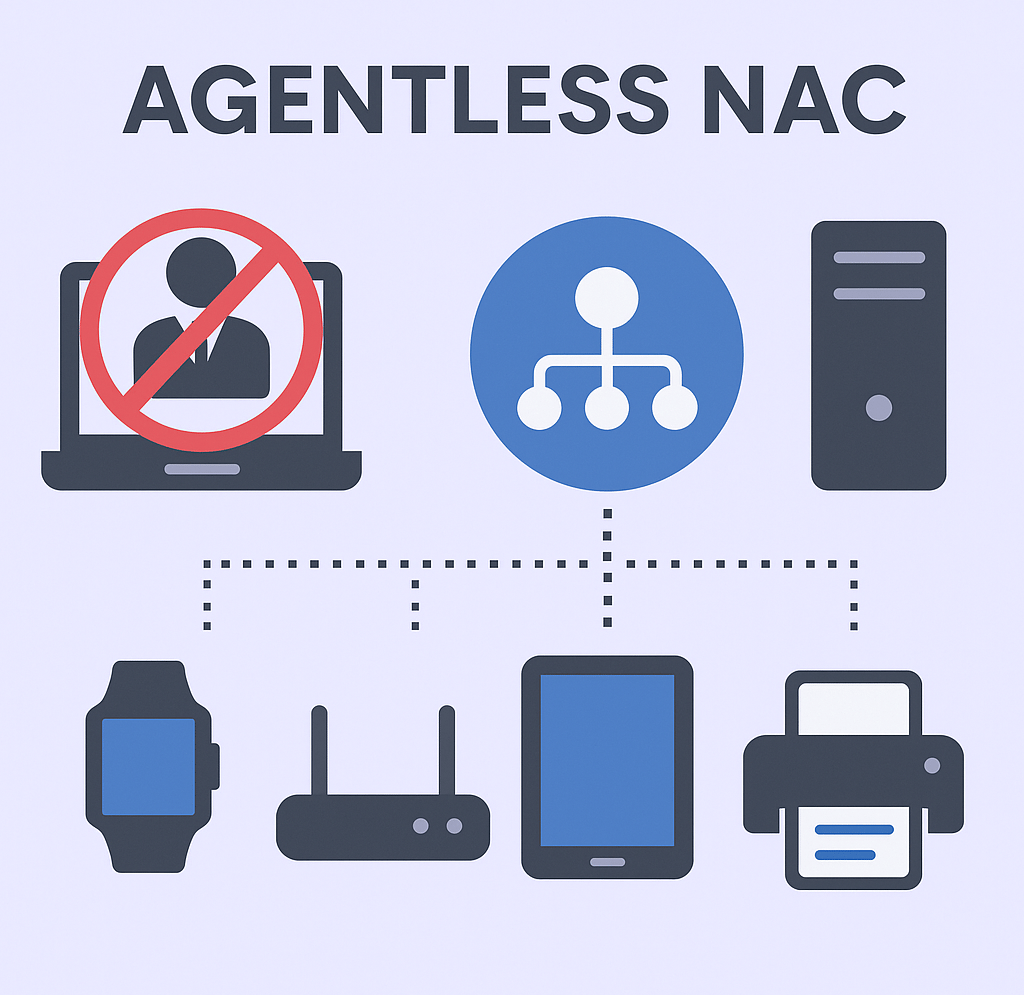Understanding Agentless Network Access Control (NAC)
In today’s increasingly hybrid IT environments, securing network access is no longer just about locking down desktops and laptops. Organizations must now manage a mix of corporate devices, employee BYODs, IoT sensors, printers, smart TVs, and more. So how do you control who or what connects to your network without installing security agents everywhere? Welcome to the world of agentless NAC.
ARTICLES
6/24/20252 min read


What Is Agentless NAC?
Agentless Network Access Control (NAC) refers to a method of managing and securing access to a network without installing software agents on endpoint devices.
Instead of relying on a local agent to report system status or enforce policies, agentless NAC uses existing infrastructure and protocols to identify, authenticate, and control access.
It’s like having a smart bouncer at the door no need to check ID with a scanner when facial recognition and guest lists are already in place.
How Does It Work?
Agentless NAC solutions leverage tools like:
SNMP, RADIUS, or DHCP to fingerprint devices,
Network scans to detect OS, MAC address, and open ports,
Active Directory or SSO integrations to track users and groups,
Switch and firewall integration to enforce access policies (VLAN assignment, quarantine, etc.)
The result? The NAC system can identify and control devices attempting to connect without touching the endpoint.
Benefits of Agentless NAC
Zero installation: No need to manage agent deployment across devices.
BYOD & IoT friendly: Works well with unmanaged or “dumb” devices.
Fast deployment: Easier and quicker to implement at scale.
Centralized visibility: See all devices across your network, even rogue or unknown ones.
Trade-offs to Consider
Limited posture checks: Can't deeply inspect endpoint health (e.g., AV status, patch level).
Less granular control: Agent-based NAC can enforce more specific policies.
Reliance on infrastructure: Needs strong integration with network switches, firewalls, and AD.
In short, agentless NAC gives you broad visibility and basic control, but not deep endpoint compliance enforcement.
When Should You Use Agentless NAC?
Agentless NAC is ideal for:
Organizations with diverse or unmanaged endpoints (e.g., universities, hospitals, co-working spaces),
Guest-heavy networks where users bring personal devices,
Smart offices and IoT-heavy environments.
For companies that don’t want the complexity of endpoint agents but still need visibility and basic control agentless NAC strikes a great balance.
Final Thoughts
As businesses become more dynamic and connected, traditional endpoint-centric security models aren’t enough. Agentless NAC provides a modern, scalable way to secure your network without adding friction.
Whether you’re protecting a corporate campus, securing IoT, or enabling safe BYOD, agentless NAC is a powerful piece of the puzzle.
